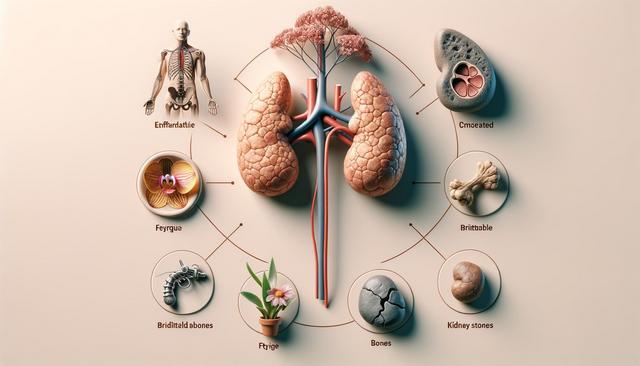Understanding the Role of the Parathyroid Glands
The parathyroid glands are four small glands located near the thyroid in the neck. Despite their name, they are not related to the thyroid gland but play a crucial role in regulating the body’s calcium levels. These glands produce parathyroid hormone (PTH), which helps control calcium and phosphorus levels in the blood and bones. When the glands produce too much or too little PTH, it can lead to a parathyroid disorder, affecting various systems in the body. Recognizing the signs early can help prevent complications such as kidney stones, osteoporosis, and neurological issues.
Parathyroid disorders primarily fall into two categories: hyperparathyroidism and hypoparathyroidism. Hyperparathyroidism occurs when one or more of the glands become overactive and secrete excessive amounts of PTH, leading to elevated calcium levels in the blood. On the other hand, hypoparathyroidism involves underactive glands, resulting in low levels of calcium. Each condition has distinct symptoms, but some overlap can occur, making professional diagnosis important.
General Symptoms to Watch For
Several symptoms can indicate a parathyroid imbalance, and they often vary depending on whether the condition is associated with high or low calcium levels. Common symptoms of hyperparathyroidism include:
- Fatigue and weakness
- Bone and joint pain
- Increased thirst and frequent urination
- Abdominal pain, nausea, or constipation
- Depression or anxiety
In contrast, those with hypoparathyroidism may experience:
- Muscle cramps or spasms
- Tingling or numbness in the hands, feet, or face
- Dry skin and brittle nails
- Hair loss
- Mood swings or memory issues
Since these symptoms can resemble other medical conditions, consulting a healthcare provider for appropriate testing is essential. Blood tests measuring calcium and PTH levels are typically the first step in identifying a parathyroid disorder.
Neurological and Cognitive Symptoms
One of the more subtle but impactful aspects of parathyroid disorders involves neurological and cognitive function. High calcium levels caused by hyperparathyroidism can affect brain function, leading to symptoms such as:
- Difficulty concentrating
- Memory problems
- Confusion or ‘brain fog’
- Irritability or decreased motivation
In the case of hypoparathyroidism, the brain may be affected by low calcium levels, resulting in similar cognitive disturbances. These symptoms can be misattributed to aging, stress, or mental health concerns, which often delays proper diagnosis. If you’re experiencing persistent cognitive issues alongside other physical symptoms, it’s worth investigating the possibility of a parathyroid disorder.
Impact on Bones and Kidneys
Parathyroid disorders can significantly affect bone density and kidney function over time. Hyperparathyroidism, in particular, increases calcium levels in the blood by pulling calcium from the bones, which can lead to:
- Osteopenia or osteoporosis (weakened bones)
- Frequent bone fractures
- Bone pain or tenderness
Excess calcium in the blood can also strain the kidneys, resulting in:
- Kidney stones
- Reduced kidney function
- Frequent urination or dehydration
On the other hand, hypoparathyroidism may lead to calcium deposits in the kidneys or other soft tissues, although this is less common. Monitoring bone density and kidney health is an important part of managing a diagnosed parathyroid disorder.
When to See a Healthcare Provider
Recognizing when to seek medical advice is crucial if you suspect a parathyroid issue. While occasional fatigue or mood changes are common, the presence of multiple symptoms—especially those related to calcium imbalance—warrants further investigation. You should consider seeing a healthcare provider if you experience:
- Persistent fatigue or muscle weakness
- Unexplained bone pain or fractures
- Frequent kidney stones
- Cognitive difficulties not improving with rest
- Tingling sensations or muscle cramps
A provider may recommend blood and urine tests to evaluate calcium and PTH levels, followed by imaging studies if needed. Early detection allows for better management and can help prevent long-term health complications associated with parathyroid disorders.
Conclusion: Stay Informed and Proactive
Parathyroid disorders often go undiagnosed due to their subtle and varied symptoms. By understanding the common warning signs—ranging from fatigue and mood changes to bone pain and kidney issues—individuals can take proactive steps toward timely evaluation and treatment. If you or someone you know is experiencing persistent, unexplained symptoms, consulting a healthcare provider is the first step toward better health. Staying informed about how the parathyroid glands affect overall well-being empowers you to make educated decisions about your health and treatment options.


